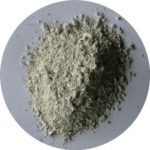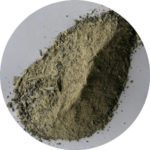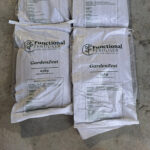P.W. Burton
When farming I had a sneaking suspicion that much of the information received via main stream media, printed material only then, was an overly simplified version of reality.
Since becoming immersed in the fertiliser industry and having access to research work, that feeling has been confirmed. There’s no question that the attitude “farmers won’t understand, just tell them what to do”, was and still is alive and well.
The difficulty is that when farmers accept information without questioning its accuracy and make decisions accordingly, there are unintended consequences which are often worse that the initial problem.
People become genuinely confused and tend to stop trying to understand. Quick fixes are then demanded, most of which are incapable of addressing the underlying issues.
Farmers are just as capable of understanding complex issues as any other group and have the added advantage of being able to test the effectiveness of prescribed solutions. What’s required is the awareness that this can often be easily carried out in the field without specialist equipment.
A strong sharp spade and a quick dig can often provide the information necessary to solve what at first might seem a quite complex problem.
I recall a client commenting that although bloat had almost ceased to be an issue after applying the recommended nutrient mix there was one paddock where it still occurred.
A brief history of the paddock provided the likely reason and half an hour in the paddock confirmed the theory.
The paddock was two years out of a maize crop and, as is often the case, a pan or hard layer at about 100 -150mm had developed. Few roots had been strong enough to reach the subsoil which meant the plant was feeding almost entirely on what was available above that layer.
Moisture and temperature fluctuate rapidly in the top 150mm of most soils which means both growth, and nutrient availability also vary significantly, not ideal for grazing ruminants that operate best when their diet is constant.
Potassium is the major nutrient most available for plant uptake when soils are moist. The other major positively charged nutrients are more tightly held as they are bound with other elements.
This means that calcium, magnesium, and sodium are down on ideal for plant uptake, and bloat is nearly always more prevalent when there are high levels of potassium and low levels of sodium.
Having identified the likely issue the fix was relatively straightforward. In the short term ensuring salt was available in bins when stock next grazed the paddock reduced the likelihood of animals being severely affected.
Several options were discussed as the longer-term solution. Aerating using an implement designed specifically to lift the top 200 -250mm of the soil allowing air to enter and plant roots to penetrate to a greater depth was considered as an option.
As a recent soil test indicated that plant available calcium levels were lower than optimum an application of lime was recommended. Calcium stimulates the activity of earthworm and other beneficial soil dwellers. Earthworms alone can be enough to break hard pans and provide long-term relief. Fungi and bacteria in their absence can and do provide that function should the soil be too abrasive for earthworm proliferation.
The underlying principle is that animal health is directly linked to the mineral content of the pasture, which is dependent on soil-held plant available mineral, and that is largely governed by physical soil structures.
A spade and some time in a paddock examining the physical nature of the soil and the activity of plant roots can often be enough to unlock the reasons for sub-optimal animal and total farm performance.
There is excellent printed material, and people with the necessary experience to help take farm performance to the next level, when there is a genuine desire to do so. For more information contact Peter on 0800 843 809.




